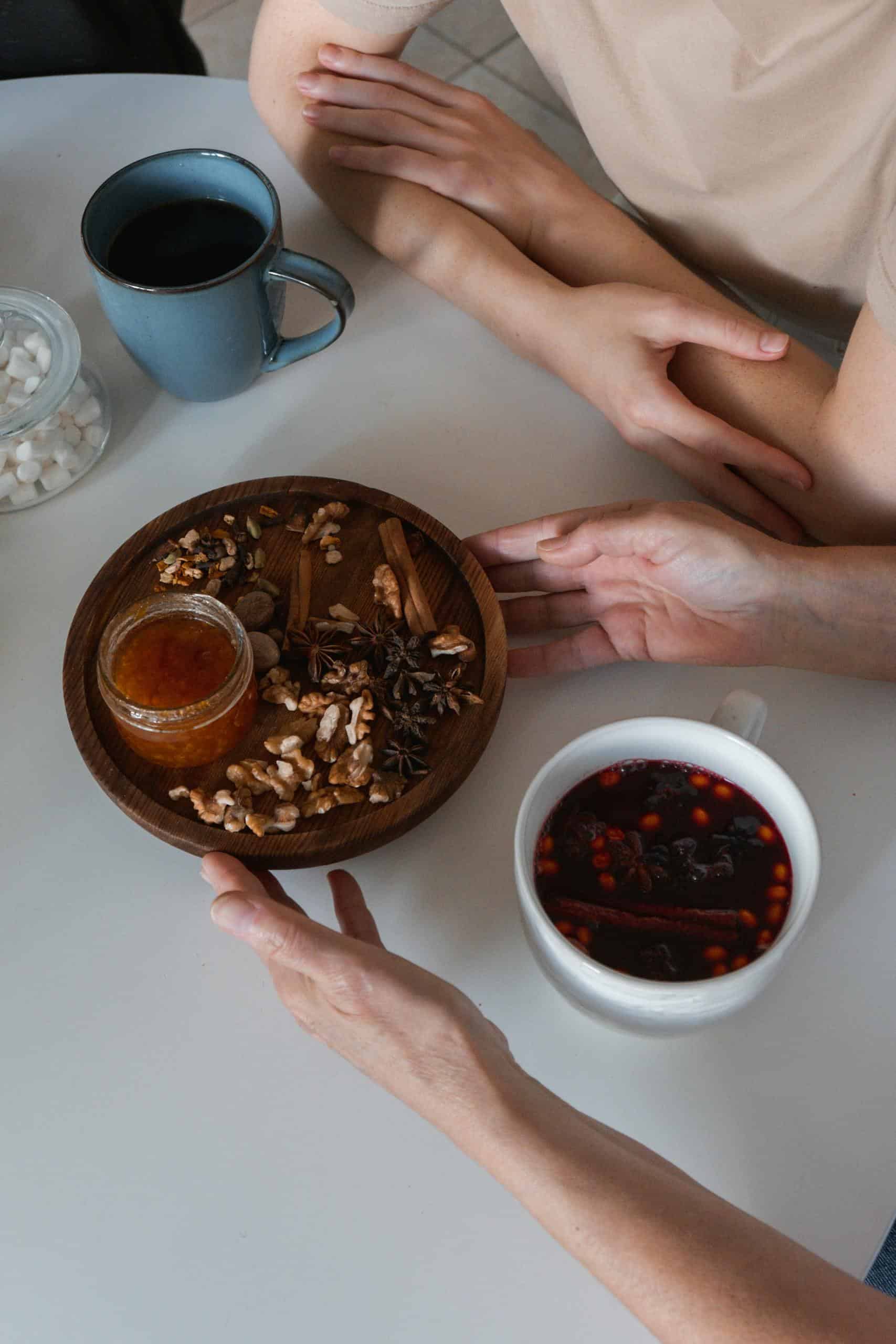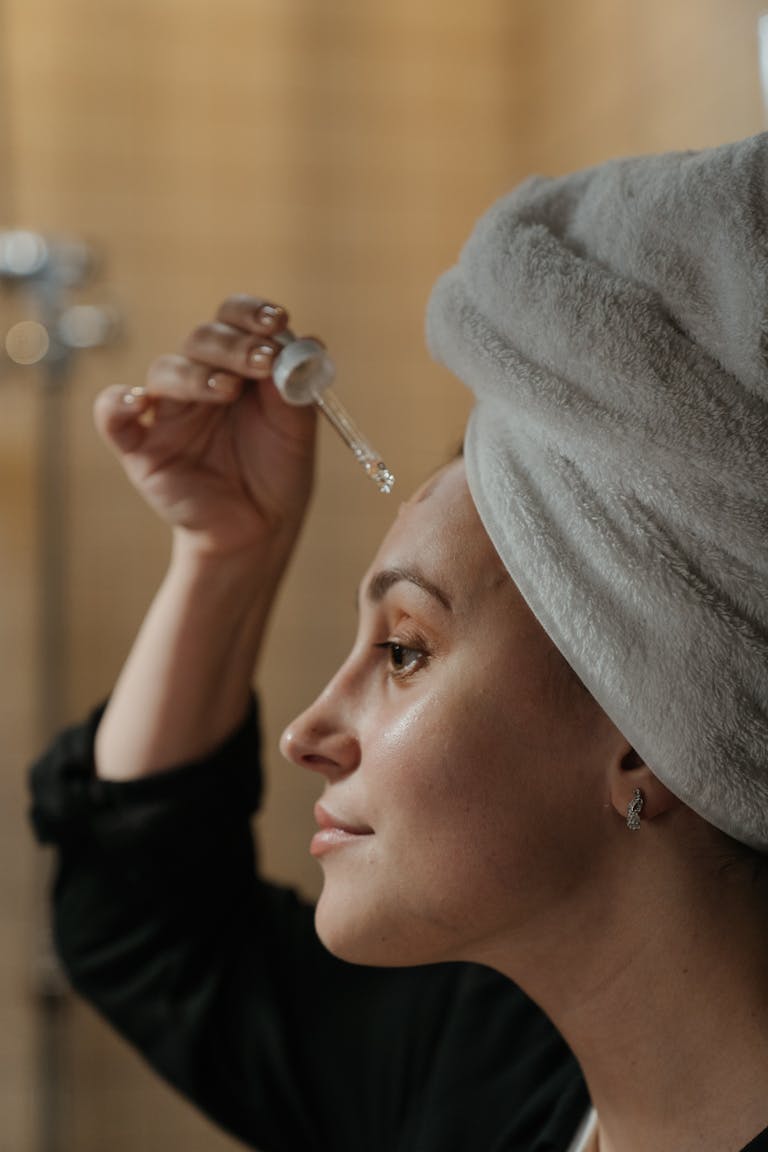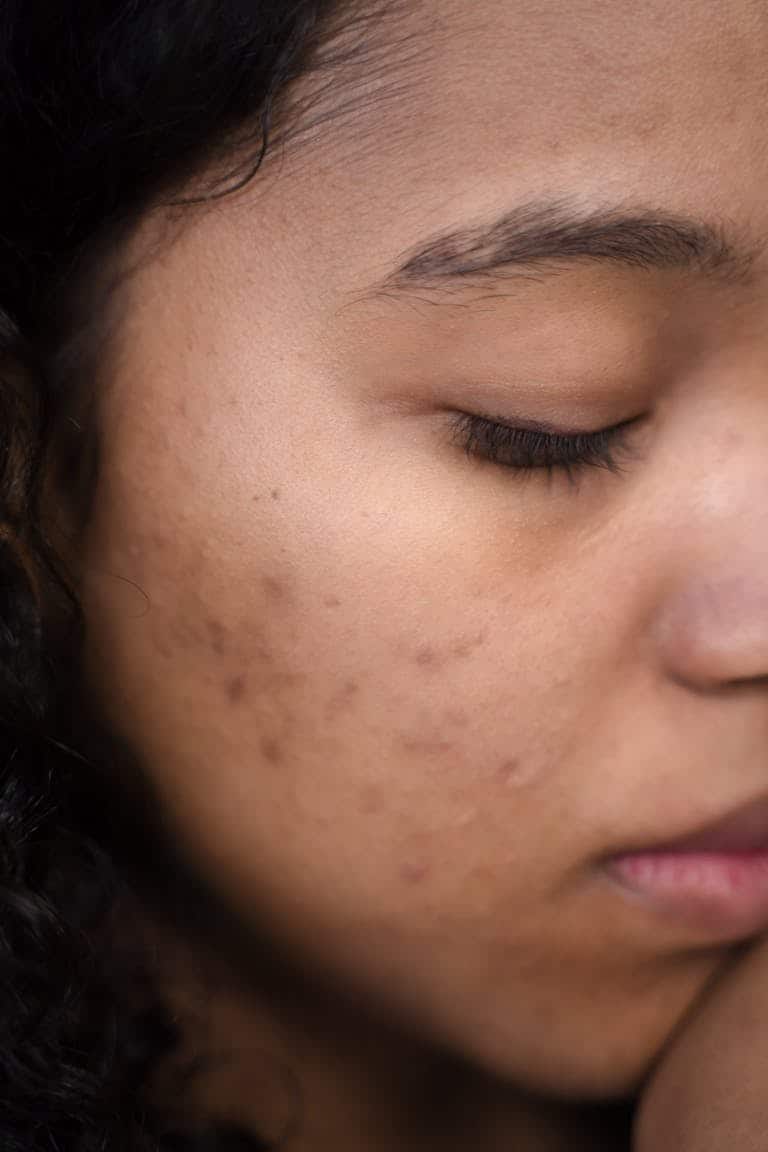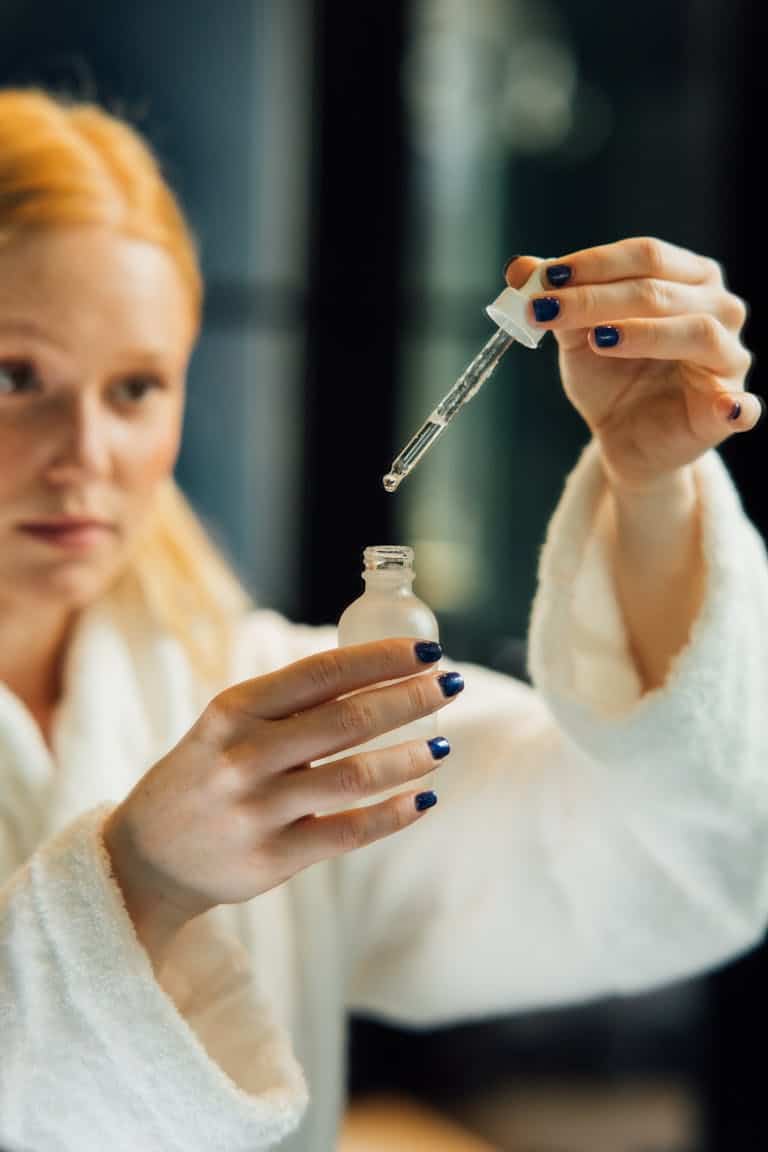Beyond Creams: The Chinese Medicine Secret to “Inner Moisturizer” for Perimenopause Dry Skin
Perimenopause dry skin is one of the most frustrating symptoms of hormonal change. If you’ve been fighting it with creams alone, it’s time to discover the profound power of Chinese Medicine. The mirror doesn’t lie. You apply your richest moisturizer, but five minutes later, your skin still feels tight. It looks dull, a little crepey, and those fine lines seem to be deepening overnight. If you’re a woman in your 40s or early 50s, you’re not imagining it: Perimenopause dryness is different.
It’s not just a surface-level issue that a cream can fully fix. It’s a deep, internal shift that requires an “Inner Moisturizer” strategy—a holistic approach rooted in the 2,000-year-old wisdom of Traditional Chinese Medicine (TCM).
In this ultimate guide, we’ll move past temporary topical fixes and show you how to truly nourish and hydrate your skin from the inside out by addressing the root hormonal imbalance, which TCM identifies as a depletion of your body’s essential fluids and energy.
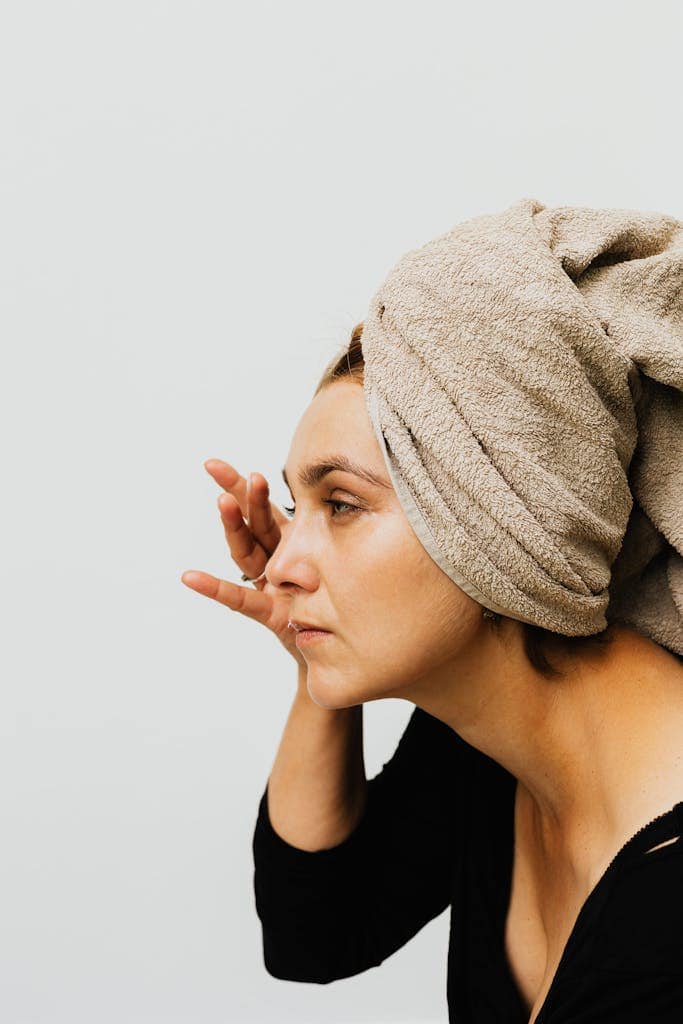
Why Perimenopause Dryness Isn’t Just About Estrogen
Conventional Western medicine correctly points to the fluctuating and eventual decline of estrogen as the primary cause of perimenopausal skin changes. Estrogen is critical for:
- Collagen Production: The protein responsible for firmness and elasticity (you lose about
of collagen in the first five years of menopause).
- Hyaluronic Acid and Ceramide Synthesis: Key compounds that help the skin barrier retain moisture.
- Sebum (Oil) Production: The natural lipids that keep skin soft and protected.
When estrogen dips, these functions slow down, leading to the classic symptoms of dryness, thinning, and loss of plumpness.
The TCM Perspective: Depletion of Yin and Essence (Jing)
In Traditional Chinese Medicine, the entire aging process, especially the perimenopausal transition, is governed by the Kidney system. The Kidneys are the source of our deepest, most foundational energy, known as Kidney Essence (Jing).
Kidney Jing gives rise to the body’s cooling, nourishing fluids and substance, called Yin.
Think of your Yin as the water in your well and your skin’s deepest moisturizer.
During perimenopause, as Jing naturally declines, your body’s Yin is depleted. When Yin is low, you get signs of dryness, heat, and internal restlessness. This is why your skin doesn’t just feel dry, it may also feel:
- Hot (Empty Heat)
- Itchy (Lack of moisture to soothe)
- Thirsty (A continuous need for topical hydration)
When your “Inner Moisturizer” (Yin) is running low, no amount of surface-level cream can fully compensate. The solution is to intentionally nourish and replenish the Kidney Yin.
The Inner Moisturizer Strategy: Nourishing Kidney Yin
Replenishing Yin is a long-term strategy, but the results are cumulative, leading to more resilient, calm, and naturally hydrated skin. This approach relies on diet, targeted herbs, and lifestyle shifts.
1. The Yin-Building Diet: Foods that Hydrate from Within
Your diet is the most accessible way to replenish your deep Yin reserves. The best Yin-nourishing foods are typically dark, deeply pigmented, moist, or sticky.
| TCM Category | Food Examples | Skin Benefit |
| Dark & Black Foods | Black Sesame Seeds, Black Beans, Walnuts, Mulberries | Nourish Kidney Essence (Jing) and Blood; support collagen and hair health. |
| Goji Berries | Goji Berries (Lycium Fruit) | Highly effective for nourishing Kidney Yin and Blood; brightens complexion. (Internal Link: Chinese Herbal Ingredients for Perimenopausal Skin: Ginseng, Goji & More) |
| Moist & Sticky Foods | Pears, Apples, Honey, Tremella Mushroom, Bone Broth | Directly generates fluid and moisture; supports the body’s natural hyaluronic acid. |
| Good Fats | Avocado, Flaxseed Oil, Coconut Oil | Supports the skin’s lipid barrier (analogous to the protective sebum that estrogen once encouraged). |
| Deep Greens | Spinach, Kale, Watercress | Supports Liver Blood, which works synergistically with Kidney Yin to nourish the skin. |
Actionable Tip: Start your day with a small handful of Black Sesame Seeds (you can find these at Amazon [Amazon Link to Black Sesame Seeds]) and a tablespoon of Goji Berries added to your oatmeal or yogurt. These two ingredients are powerhouse Yin tonics.
2. Targeted Herbs: Potent Internal Support
While diet is foundational, certain Chinese herbs are celebrated for their powerful ability to restore Yin and Blood, directly impacting skin hydration and thickness. Always consult a licensed TCM practitioner before starting a new herbal regimen.
- Rehmannia Root (Shu Di Huang): This is one of the most famous and effective Yin-tonics. It is often described as deeply moistening and nourishing, directly addressing symptoms of dry, aging skin that lacks luster.
- Chinese Yam (Shan Yao): A gentle, moistening herb that fortifies the Spleen (responsible for digestion) and the Kidney, helping the body better produce and transport fluids throughout the body, including to the skin.
- Dong Quai (Dang Gui): Often called the “female ginseng,” this herb is crucial for nourishing the Blood. Since skin is nourished by Blood, supplementing it helps to restore a natural, healthy flush and vital glow.
DIY Tea Blend: Incorporating herbs into a daily ritual supports both your skin and your mental state. Consider a simple blend of Goji Berries, Chrysanthemum, and Rosebuds. This helps clear heat, nourishes Yin, and helps soothe the Liver (stress). (Internal Link: The Benefits of Tea for Perimenopause: How Sipping and Applying Tea Supports Skin, Stress, and Well-Being)
The Lifestyle Reset: Restoring Jing and Calming Empty Heat
Since the root of the problem is a depletion of Essence (Jing) and Yin, the biggest leak isn’t just your hormones—it’s your lifestyle. Perimenopause is your body’s loud signal to slow down, rest, and redirect energy.
The Power of Sleep as Medicine
The deepest form of Yin restoration happens during sleep. In TCM, the hours between 10 PM and 2 AM are especially vital for replenishing Blood and Yin. Chronic sleep deprivation is a direct drain on your Kidney Essence, which rapidly accelerates skin aging, dryness, and dullness.
- The Sanctuary Ritual: Develop a non-negotiable wind-down ritual. This is where your self-care intersects with your skincare. Take a bath, practice a few minutes of [Internal Link: Mindfulness in Perimenopause: Why It Matters Now], and apply a deeply hydrating mask (Internal Link: The Ultimate Guide to the Best Face Masks for Perimenopausal Skin: Soothe, Hydrate, and Rejuvenate) to capitalize on nighttime repair.
- Bedroom Temperature: Night sweats are a classic sign of Yin Deficiency (Empty Heat rising). Keep your room cool to reduce fluid loss that further exacerbates skin dryness.
Avoid the “Yang Drain”
Yin and Yang exist in balance. When Yin is low, the body’s warming, active energy (Yang) can become relatively excessive, leading to the symptoms of heat, flushing, and internal agitation that dry out the skin. Avoid habits that excessively stimulate your Yang energy:
- Over-Caffeination: Too much coffee or highly stimulating energy drinks can further burn through your Yin and create more internal “fire” or Empty Heat.
- High-Intensity Exercise (HIIT): While exercise is crucial, excessive, high-impact exercise can be too Yang-activating and depleting during this phase. Choose nourishing movement like Yoga, Qigong, or long walks instead.
- Chronic Stress: Mental exhaustion and anxiety is a form of heat/stagnation that consumes your cooling Yin fluids.
Skincare Synergy: Locking in the Inner Moisture
While the internal work is paramount, you must pair it with a supportive topical routine to protect your delicate, Yin-deficient skin barrier. Your external routine acts as the lid on the well, preventing the precious moisture you’re building internally from evaporating.
Focus on three key pillars: Gentle Cleansing, Barrier Repair, and Deep Moisturization.
1. Gentle Cleansing (Protect the Barrier)
Harsh cleansers strip the skin’s natural lipids, worsening dryness and irritation. In TCM, this stripping action depletes the already weakened Protective Qi.
- Product Focus: Switch to oil- or cream-based cleansers that hydrate while they cleanse. Look for formulas with ceramides or squalane.
- Recommendation: A hydrating, non-foaming cream cleanser. (See Best Cleansers for Perimenopausal Skin)
2. Barrier Repair (Essential Ingredients)
The skin barrier, weakened by collagen and ceramide loss, needs active repair.
| Ingredient | Skincare Benefit | TCM Analogy |
| Ceramides | Restores the skin’s lipid barrier, locking in moisture. | Sealing the body’s precious fluid and Yin. |
| Hyaluronic Acid | Attracts and holds water on the skin’s surface. | A temporary surface layer of fluid to quench thirst. |
| Niacinamide | Soothes redness, evens tone, and strengthens barrier function. | Calms and clears subtle heat and inflammation. |
| Bakuchiol | Gentle collagen stimulation without the drying side effects of traditional retinol. | A nourishing, gentle boost to vitality without depleting Yin. (See Bakuchiol vs. Retinol: Which Is Best for Perimenopausal Skin?) |
3. Deep Moisturization (Layering)
Because perimenopausal skin is deficient in oil and water, a single moisturizer is often insufficient. Layering products is key.
- Step 1: The Humectant (Water-based): Apply a serum rich in Hyaluronic Acid and Vitamin C to dampen the skin and attract moisture. (See 10 Best Clean Serums for Perimenopausal Skin)
- Step 2: The Emollient (Cream-based): Follow with a cream containing Ceramides to reinforce the barrier and reduce the TEWL (transepidermal water loss) that plagues dry skin.
- Step 3: The Occlusive (Oil-based): Seal it all in with a rich face oil, especially at night. Look for oils high in omega fatty acids, like Rosehip Oil or Squalane.
External Link Recommendation: We highly recommend a deeply moisturizing night cream rich in ceramides to support overnight barrier repair like Dr Jart+ Ceramidin Skin Barrier Moisturizing Cream
Conclusion: Embracing the Well-Nourished Self
Perimenopause skin dryness is not a failure of your skincare routine; it’s a profound signal from your body that your deep, internal reserves—your Yin and Essence—need nurturing.
By focusing on the Inner Moisturizer strategy—nourishing your body with Yin-building foods, incorporating restorative herbs, and prioritizing rest—you are not just improving your skin. You are shifting your entire body’s internal thermostat and energy reserves to navigate this transition with greater ease, vitality, and a glow that comes from true, deep nourishment.
Commit to this holistic approach, and you’ll find that your skin will respond with a resilience and radiance that no amount of topical cream could ever achieve alone.
